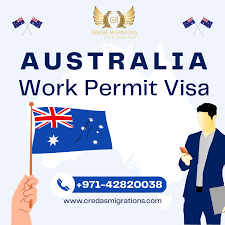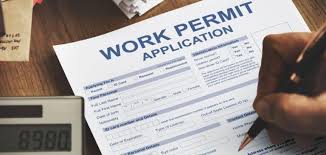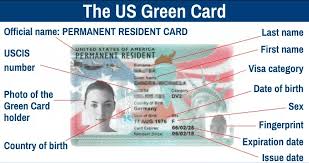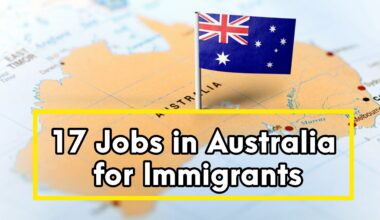Australian Work Permit
Australian Work Permit: Australia has long been a desirable destination for individuals seeking new employment opportunities and a better quality of life. With its booming economy, diverse culture, and high standard of living, the country attracts thousands of skilled workers, students, and professionals from around the globe.
For foreigners aspiring to work in Australia, securing a work permit is an essential step in realizing this dream. This article provides an in-depth exploration of the various types of Australian work permits, their eligibility criteria, application procedures, and other relevant information.
1. Overview of Australian Work Permits
Australia offers several types of work visas, allowing both skilled and unskilled workers to contribute to the country’s labor market. Work permits are generally classified into temporary and permanent visas, each designed to meet specific labor market needs.
The choice of visa depends on the nature of employment, skills, qualifications, and the length of time the individual plans to stay in Australia.
The Australian government places significant emphasis on filling labor shortages in critical industries, such as healthcare, information technology, construction, and agriculture.
Through the Department of Home Affairs, Australia has developed a streamlined system to attract workers with skills that match these needs. However, the visa process is rigorous, and applicants must meet several criteria to be eligible for any work visa category.
2. Types of Australian Work Visas
Australia offers a variety of work visa options, categorized into temporary and permanent visas. Each visa type is structured to address specific employment needs.
a. Temporary Skill Shortage (TSS) Visa (Subclass 482)
The TSS Visa allows employers to fill positions where skilled workers are in short supply. This visa can be granted for up to four years, depending on the occupation. The visa is further divided into three streams:
- Short-Term Stream: Valid for up to two years, this visa is for occupations listed on the Short-Term Skilled Occupation List (STSOL).
- Medium-Term Stream: This stream is for occupations listed on the Medium and Long-Term Strategic Skills List (MLTSSL) and offers a stay of up to four years. It is also a pathway to permanent residency for eligible workers.
- Labour Agreement Stream: This is applicable when an employer has entered into a labor agreement with the Australian government.
b. Skilled Independent Visa (Subclass 189)
The Skilled Independent Visa is a points-tested permanent visa for workers who do not require sponsorship from an employer, family member, or state or territory government. It is intended for skilled individuals in occupations listed on the MLTSSL.
This visa grants the holder the right to live and work anywhere in Australia on a permanent basis.
c. Skilled Nominated Visa (Subclass 190)
The Skilled Nominated Visa is similar to the Subclass 189 but requires nomination by an Australian state or territory government. Applicants must also score sufficient points in the points test to qualify. This visa provides permanent residency to those who meet the eligibility criteria.
d. Employer Nomination Scheme (ENS) Visa (Subclass 186)
The ENS Visa allows skilled workers nominated by an Australian employer to live and work permanently in the country. There are three streams under this visa category:
- Direct Entry Stream: For applicants who have never worked in Australia or hold a temporary visa.
- Temporary Residence Transition Stream: For individuals who hold a TSS visa and have worked for the same employer for at least three years.
- Labour Agreement Stream: For workers whose employers have a labor agreement with the Australian government.
e. Working Holiday Visa (Subclass 417)
The Working Holiday Visa is designed for young people aged 18 to 30 (35 for some countries) who want to travel and work in Australia for up to one year. This visa allows for short-term employment during the stay, making it ideal for backpackers and those on gap years. Eligible applicants can extend their stay for a second or third year by completing specified regional work.
f. Temporary Graduate Visa (Subclass 485)
The Temporary Graduate Visa is for international students who have recently graduated from an Australian educational institution. This visa allows graduates to stay and work in Australia for 18 months to four years, depending on their qualification.
It provides a crucial pathway for international students to gain work experience and potentially transition to permanent residency.
3. Eligibility Criteria for Australian Work Permits
The eligibility criteria for Australian work permits vary depending on the visa type. However, there are common requirements that apply to most visa categories.
a. Skills Assessment
For most skilled visas, applicants must undergo a skills assessment conducted by a relevant assessing authority. This is a process to ensure that the applicant’s qualifications and work experience meet Australian standards for the nominated occupation.
b. Occupation Lists
Australia maintains several occupation lists that identify job roles in demand. These lists, including the Short-Term Skilled Occupation List (STSOL) and the Medium and Long-Term Strategic Skills List (MLTSSL), are updated regularly based on the country’s labor market needs. Applicants must ensure that their occupation is listed on the relevant list to be eligible for a visa.
c. English Language Proficiency
Proficiency in the English language is mandatory for most work visa applicants. The required level of English varies based on the visa type. Applicants may be required to take an English language test, such as the IELTS, TOEFL, or PTE Academic, to prove their language skills.
d. Points Test
Many skilled visas, including the Skilled Independent Visa (Subclass 189) and the Skilled Nominated Visa (Subclass 190), require applicants to meet a points threshold. Points are awarded based on factors such as age, qualifications, work experience, English proficiency, and whether the applicant has received a nomination from an Australian state or territory.
e. Health and Character Requirements
Applicants for all work visas must meet health and character requirements. This typically involves undergoing a medical examination and providing police clearance certificates from any country where the applicant has lived for an extended period.
f. Employer Sponsorship (if applicable)
For employer-sponsored visas, such as the TSS Visa (Subclass 482) and the ENS Visa (Subclass 186), applicants must have a job offer from an approved Australian employer. The employer must also demonstrate that they are unable to fill the position with a local worker.
4. Application Process for an Australian Work Permit
Applying for an Australian work permit involves several steps, and applicants should be diligent in ensuring that they meet all requirements before lodging their application.
a. Step 1: Determine the Appropriate Visa
The first step is to identify the most suitable visa based on the applicant’s occupation, skills, and career goals. Reviewing the various visa options and their eligibility criteria is crucial to selecting the right pathway.
b. Step 2: Submit an Expression of Interest (EOI)
For points-tested visas, such as the Skilled Independent Visa (Subclass 189) and the Skilled Nominated Visa (Subclass 190), applicants must submit an Expression of Interest (EOI) through the SkillSelect system. This system allows the Australian government and employers to assess the applicant’s qualifications and invite them to apply for a visa.
c. Step 3: Receive an Invitation to Apply (if required)
After submitting an EOI, applicants may receive an invitation to apply for the visa. It is important to note that receiving an invitation is not guaranteed; it depends on factors such as the applicant’s points score and the demand for their occupation.
d. Step 4: Gather Documentation
Once invited to apply, applicants must gather the necessary documentation, which typically includes proof of identity, skills assessment results, English language test scores, employment references, and evidence of health and character.
e. Step 5: Lodge the Visa Application
Applicants can submit their visa applications online through the Department of Home Affairs website. It is essential to ensure that all required documents are provided, as incomplete applications can lead to delays or refusals.
f. Step 6: Wait for the Decision
The processing time for work visas varies depending on the visa type and the applicant’s individual circumstances. It can take anywhere from a few months to over a year. During this time, the applicant may be required to provide additional information or undergo further assessments.
g. Step 7: Visa Grant and Travel to Australia
If the application is successful, the applicant will be granted a visa, allowing them to travel to Australia and commence work. Some visas, such as the TSS Visa, may have specific conditions regarding the duration of stay and the employer.
5. Pathways to Permanent Residency
Many temporary work visas provide pathways to permanent residency in Australia. For example, holders of the TSS Visa (Subclass 482) can apply for the ENS Visa (Subclass 186) after working in Australia for three years.
Similarly, graduates on the Temporary Graduate Visa (Subclass 485) can use their work experience to qualify for a skilled permanent visa.
Permanent residency offers numerous benefits, including the ability to live and work in Australia indefinitely, access to healthcare, and the option to apply for Australian citizenship after meeting residency requirements.
6. Conclusion
Obtaining an Australian work permit is a multi-step process that requires careful planning and attention to detail. With a variety of visa options available, skilled and unskilled workers alike can find a pathway that suits their qualifications and career goals.
By understanding the eligibility criteria, following the application process diligently, and exploring pathways to permanent residency, foreign nationals can take advantage of the many opportunities Australia has to offer.
Whether seeking temporary employment or a long-term career in Australia, securing the right work permit is the key to unlocking a prosperous future Down Under.
C.J
I am C.J, a knowledgeable individual hailing from Nigeria. I pursued my education at University of Nigeria Nnsukka, where i graduated with an impressive 3.7 CGPA, majoring in computer studies. With a passion for helping others, i loves to share my expertise in fixing and using home appliances, with a special focus on Panasonic microwaves. My teaching approach is friendly and accessible, making complex subjects easy to understand for everyone. I am dedicated to empowering people with the skills to confidently manage and maintain their household technology.






